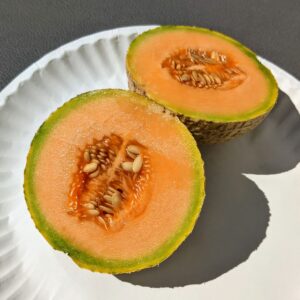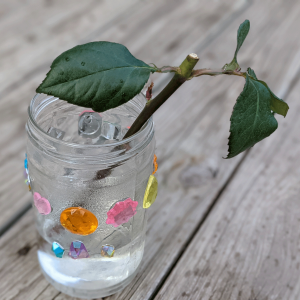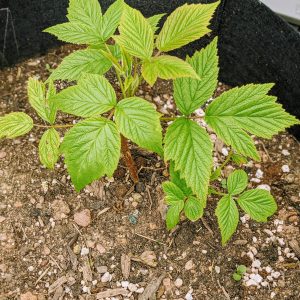Propagating Raspberries from Raspberry Roots & Suckers
Raspberry plants will spread on their own, given the space, but it’s not hard to help the process along. Propagating raspberries from suckers or raspberry roots results in a healthy, independent plant in the same season!
Where we live, we’ve got rocky clay soil, so I do most of my gardening in containers or raised beds. I planted raspberries in resin whiskey barrel planters and they’ve been doing well, but they’re getting close to outgrowing their space.
In 2021, I noticed the raspberry roots must’ve spread through the container and created a few suckers. (Or maybe some seeds dropped and grew, who knows?!)
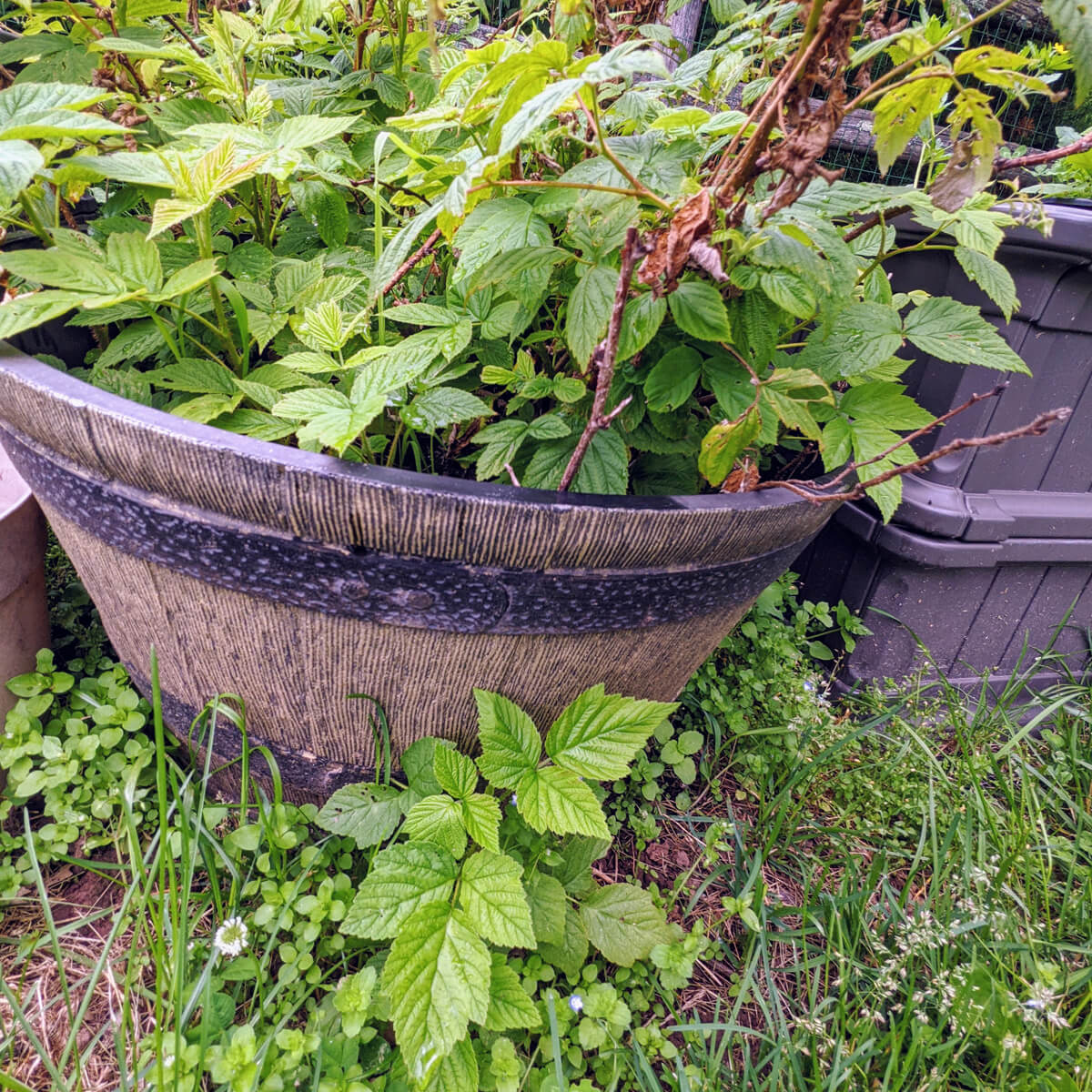
My immediate thought was to dig up any raspberry suckers and plant them in their own containers.
Turns out that was the perfect plan for how to propagate raspberries quickly and easily!
Keep reading and I’ll share my tips so you can increase your berry patch from raspberry suckers, too.
What are the different methods of propagating raspberries?
You can propagate raspberries by raspberry root division from runners or replanting suckers, by rooting raspberry canes when they touch the soil, and even by growing new plants from seed. Raspberries grown from seed will take the longest to mature and bear fruit. Planting raspberry suckers and runners results in a very quick propagation that matures and produces fruit even within the same year.
What are raspberry suckers?
Suckers are new plant sprouts that grow from the raspberry root system. Raspberry suckers can become their own independent plants when severed from the parent plant. Clipping suckers off the main root system allows the raspberry plant to focus energy on producing berries instead of growing suckers.
How do raspberry roots grow?
Raspberries often produce lateral roots that take off and form new baby raspberry plants. These berries generally boast a robust and extensive root system, allowing rapid growth and spreading. Left unattended, raspberry plants can swiftly take over a garden or growing space.
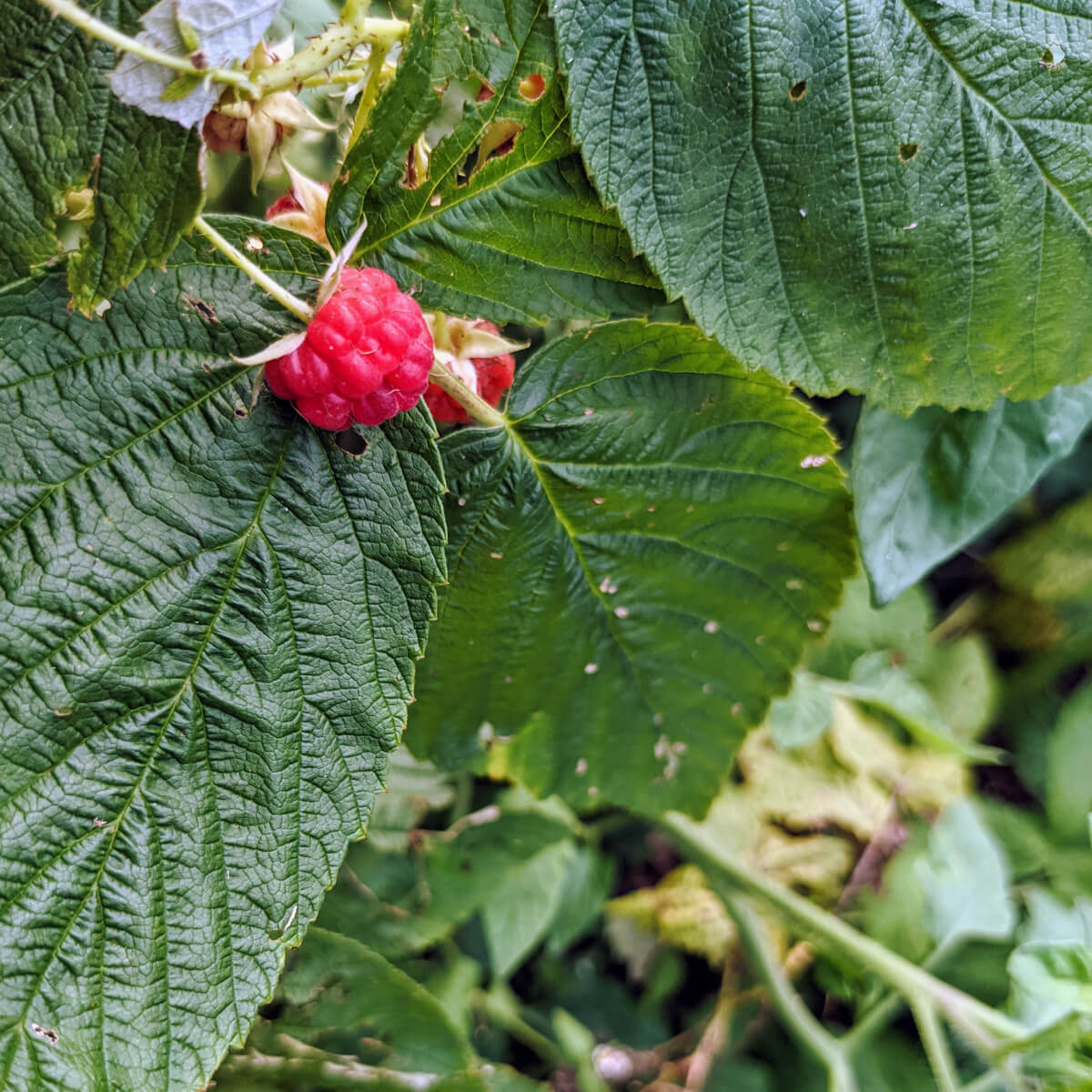
Propagating Raspberry Suckers
Propagating raspberries from suckers is just as easy as digging up a plant and putting it in a new location. Check it out!
- Identify any raspberry suckers growing nearby your mother raspberry plants.
- Use a hand spade or shovel to dig in a circle around the raspberry sucker.
- Tilt the spade to pop the soil and small plant out of the ground.
- Observe if the sucker is still connected to the parent root system. If it is, make sure most of its roots are free and then gently snip the root connecting it to the parent plant.
- Pot up the raspberry sucker in its own container or garden bed. Make sure it’s planted to the same depth it was as a sucker.
- Water adequately.
- Over the next week or so, watch the leaves closely for changes. Take a picture the first day so you have a comparison. Your plant may experience a bit of shock, but most likely it will be fine.
- Water when the soil is especially dry or if the leaves of the plant look dry and stressed. Avoid overwatering and pay attention to the weather and expected or actual rainfall.
Soon you should notice new growth coming from the propagated raspberry plant! Look for new canes emerging or brand-new leave unfolding.
Tips for Propagating Raspberries
Creating new raspberry plants from my existing ones is one of the easiest plant propagations I’ve done to date. For me, it was no-fail.
Here’s how big one of the raspberry suckers got during the same summer I replanted it!
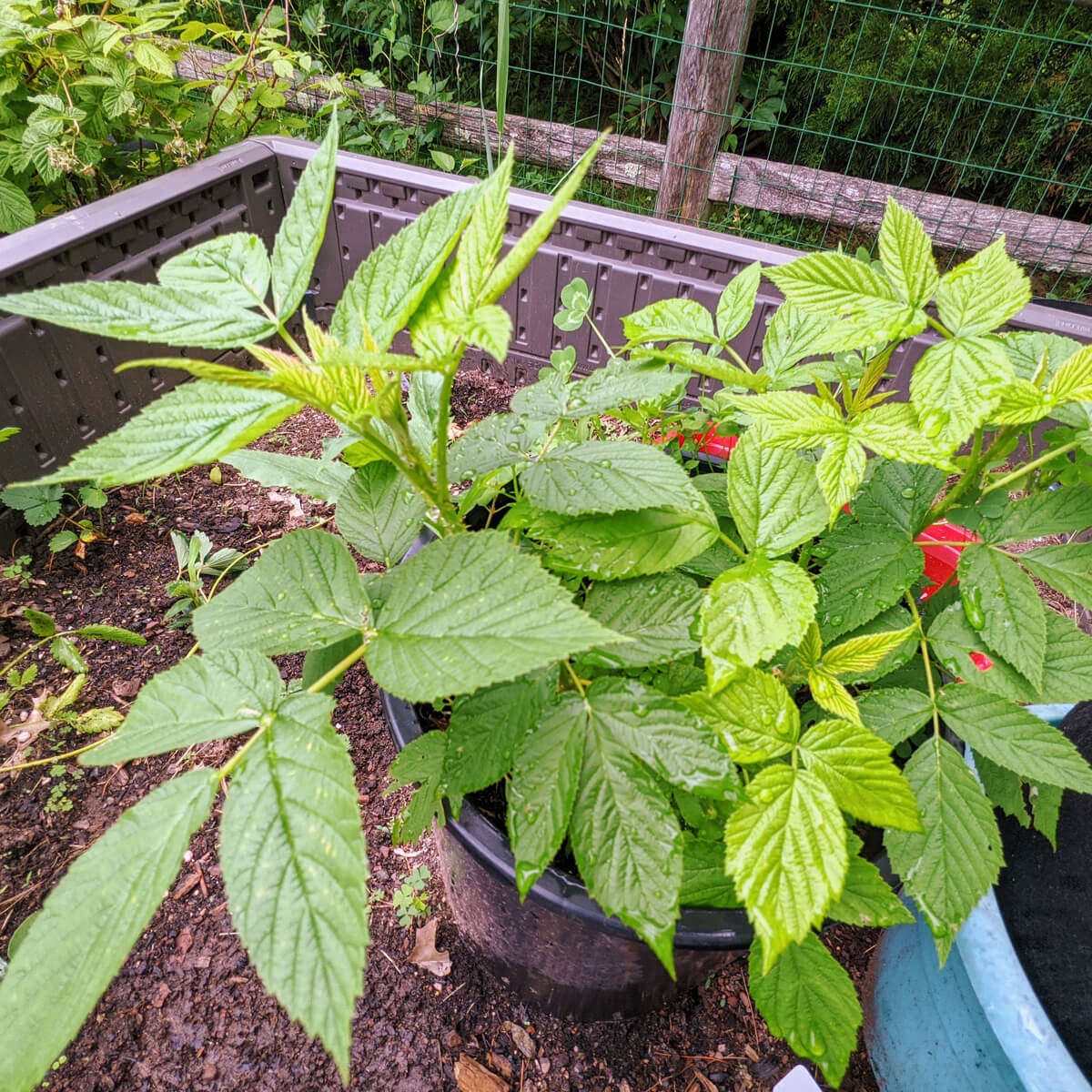
Here are some tips on propagating raspberry plants to keep in mind.
- Avoid extreme heat. Try to avoid attempting raspberry plant propagation on very hot days if possible.
- Ensure proper drainage. Make sure your new raspberry plants have free-draining soil. If using containers, double-check for drainage holes.
- Sometimes less is more. If you aren’t sure about watering needs, watch for clues. I accidentally killed all of my first raspberry plants with too much love – I almost certainly overwatered them in their earliest weeks and the never recovered.
- Plant strategically. When planting out the suckers you’ve propagated, check out a few raspberry companion plants for a symbiotic garden space.
By the way, if you liked this post, you might also enjoy reading about the Anne yellow raspberries we are growing. They’re fantastic!
Do you have any questions about propagating raspberries from suckers? We are always happy to help.
If you’ve done it before, please feel free to share your tips in the comments as well!
We love hearing from you!
Happy Gardening!



